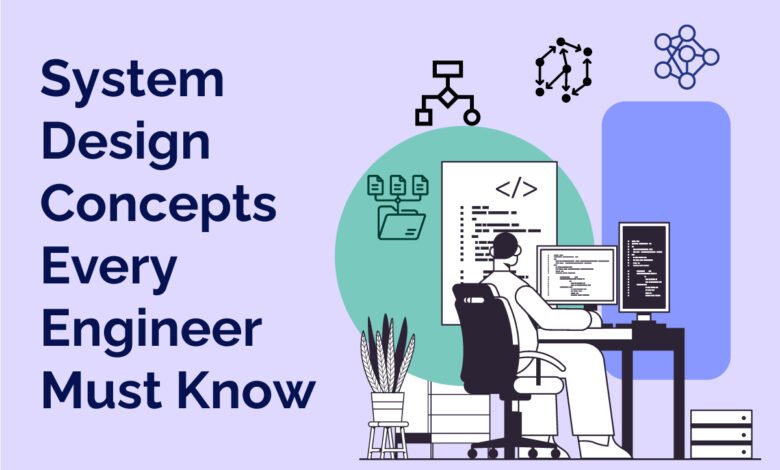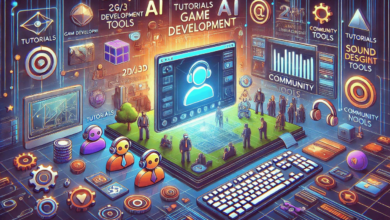Understanding System Design: A Beginner’s Guide to Building Reliable Systems

System design is all about planning how different parts of a software application work together to create a smooth and reliable experience for users. It involves making decisions on how each component—like databases, servers, and user interfaces—should function and connect. Knowing the basics of system design helps developers build strong foundations for any application, whether it’s a small project or a big platform.
System design is important for anyone looking to create scalable and efficient software. By understanding system design, beginners can learn to make choices that improve performance, handle more users, and make troubleshooting easier. In this guide, we’ll break down the key concepts, approaches, and best practices that beginners need to start their system design journey.
What is System Design and Why is It Important?
System design is the process of planning how different parts of a software system will work together to meet specific goals. Every app, website, or software we use is made up of different parts that need to connect and function as one. This process ensures that each part is organized to work well, even under heavy usage.
In a well-thought-out system design, components such as databases, servers, and user interfaces are built to perform tasks efficiently. By organizing these parts carefully, developers can make sure the software is fast, reliable, and easy to maintain. This is why system design is essential; it creates a strong foundation for applications, helping them run smoothly even as they grow.
System design is also important because it considers the future needs of the software. For example, a design that allows easy scaling will help the software grow without breaking. This planning makes it easier to add new features, handle more users, and fix issues without having to rebuild the system.
Basic Concepts of System Design: Key Elements Explained
Understanding the main parts of systemdesign can help anyone, especially beginners, get started in the field. Some core elements in systemdesign include components like databases, servers, and network configurations. Each of these plays a specific role in how a system works.
Databases store information that users access, such as names, passwords, or files. Servers are powerful computers that process requests, like when a user logs in or loads a page. Networks allow the different parts of a system to communicate quickly, making sure users get fast responses.
Learning about these parts can help beginners understand how to structure a system. By combining these elements effectively, developers can ensure their systems are reliable and scalable. A strong system design allows a software application to run well even as the number of users grows over time.
Understanding Scalability in System Design
Scalability is an essential part of system design, especially as applications gain more users. A scalable system can handle increased load without slowing down or breaking. When planning system design, developers think about ways to make sure it can grow easily over time.
One way to make systems scalable is by using efficient databases and servers that can manage large volumes of data and user requests. By dividing tasks between different servers, the load is spread out, making the system faster and more stable. This process of dividing the workload, known as “load balancing,” is key in large-scale applications.
Scaling can also be done vertically or horizontally. Vertical scaling means upgrading the existing server, while horizontal scaling involves adding more servers to handle the increased load. These techniques help ensure the system remains responsive and reliable as it expands.
Different Types of System Design and Their Uses
In the world of systemdesign, different types serve different purposes based on what the software needs to achieve. Some systems focus on handling large data sets, while others prioritize user experience. Each type of system design has unique features and benefits, allowing developers to choose what works best.
For example, centralized systems have a single point of control, making them simpler to manage. However, they may struggle with heavy traffic. Distributed systems have multiple points of control, which makes them more resilient and able to handle larger volumes but can be more complex to set up.
Each design type has its pros and cons, and understanding them can help developers choose the right one. Whether it’s a database-focused system or a user-friendly application, each design has specific elements to meet its goals.
System Design Process: A Step-by-Step Guide
The systemdesign process involves several steps, each guiding developers in building a reliable and efficient system. First, there is the requirement analysis stage, where developers define what the system should achieve. This helps set clear goals.
In the next step, system architecture design, developers outline the structure, like where databases, servers, and networks fit in the plan. This is followed by component design, where each part of the system is defined in detail.
Testing is crucial to ensure everything works as expected. Finally, in the deployment stage, the system goes live for users. These steps together make sure the system is well-organized and ready to handle real-world use.
Components of a Good System Design
To create a solid systemdesign, developers focus on three main components:
- Databases: Where data is stored and accessed.
- Servers: These handle user requests and process data.
- User Interfaces: How users interact with the software.
Each of these components works together to make a complete and reliable system. By carefully designing these parts, developers ensure that the system is efficient, fast, and easy to manage over time.
Conclusion
Systemdesign is an important part of building any software or app. It helps developers make strong systems that work well, even when many people are using them. By learning the basics of system design, beginners can understand how to create reliable software that is easy to manage and improve over time. With good planning, each part of the system can work together smoothly.
For anyone interested in creating software, understanding system design is a great first step. It teaches how to organize databases, servers, and user interfaces so that everything works well together. With this knowledge, beginners can build better, more reliable systems that meet the needs of users and grow successfully.
FAQs
Q: What is systemdesign?
A: Systemdesign is the process of planning how parts of software work together to create a smooth and reliable system.
Q: Why is systemdesign important?
A: Systemdesign is important because it helps make software that works well and can handle lots of users without breaking.
Q: What are the main parts of systemdesign?
A: The main parts include databases, servers, and user interfaces, which all help the system run smoothly.
Q: How does systemdesign help with scalability?
A: Good system design allows software to handle more users and data as it grows by organizing parts to share the load.





